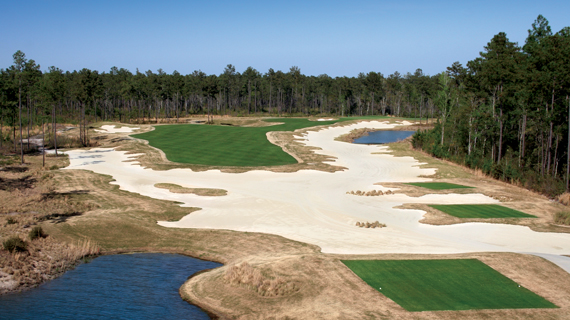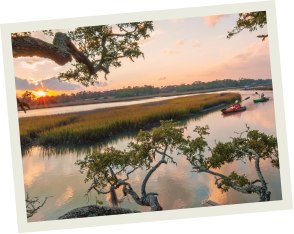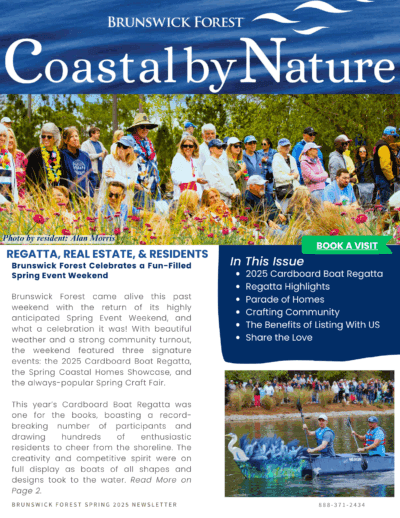Cape Fear National is distinctly Carolina, with a twist

By ERIK PETERSON
Travel Editor, GolfChannel.com
LELAND, N.C. – Under sun splashed Carolina blue skies, golf course architect Tim Cate unveiled his latest masterpiece, Cape Fear National Golf Club. While the name alone might give a novice golfer anxiety, Cate kept it playable for all types, using his creative touch to mold what has quickly become one of the most picturesque inland golf courses in the Carolina Coast region.
Hidden within the new and large Brunswick Forest residential development near Wilmington, N.C., Cape Fear National is a few things any Carolina golf course aspires to be: challenging and visually stunning, with an adherence to the natural beauty of the Carolinas.
None of this is new, however, to Cate, a native of the Carolinas who also has highly-acclaimed Tiger’s Eye Golf Links and Thistle Golf Club on his résumé.
“I pride myself on designing golf courses that provide an aesthetically pleasing, memorable experience to all levels of golfers,” Cate said. “Every shot needs a challenge.”
In all, Cape Fear National features more than 7,200 yards of golf from the back tees, 1,500 feet of bridges, as well as waterfalls, rock walls and gnarly-edged bunkers, a few of which you can even drive your golf cart through.
Bring your thinking cap to the par 5s
Cape Fear National opens with a gentle par 4, but the dogleg left second hole is a strategic three-shot par 5 no matter who’s playing it, because of a cross-cutting hazard that prevents longer hitters from bombing it off the tee. As is the case with all par 5s at Cape Fear National, the second shot is critically important to setting up your birdie opportunity. A lake protects the right side of the layup area.
“All the par 5s require a thoughtful second shot,” said director of golf Ron Thomason. “You can’t just hit your 3-wood up there somewhere around the green. You have to really think about where you’re placing it in order to avoid the trouble.”
No. 8 is the front nine’s other par 5 and it might be the best example of Thomason’s point. At 576 yards from the tips it’s not only the longest par 5 but also the most treacherous, with water bordering the entire right side.
Two big bunkers protect the left landing zone off the tee and another big one protects the layup landing area. About the only relief is the green, which is relatively flat.
No. 9, a mid-iron par 3, brings the fear into Cape Fear, particularly if the pin is back left. A lake protects the front portion of this deceptively undulating green. Aim for the right side of the green – even off it if the wind’s up – to avoid a big number that can spoil your front nine.
Drive-thru open all day
One of the defining characteristics of a Cate-designed golf course is the creative – and oftentimes massive – bunkering that adds to the natural look of the golf course more than traditional circular-shaped bunkers. Cape Fear National is no exception.
The most notable example of Cate’s eclectic bunkering is in his use of drive-thru bunkers that run along the entire right side of Nos. 5, 13 and 16.
While the visual intimidation of these monstrosities is indeed a factor, this area is actually ruled as a waste area where you can ground your club, so they’re quite manageable to hit out of. If you hit the shot as if you’re on a hard fairway it’ll come out just fine.
No. 13 is no doubt the signature hole at Cape Fear National. This beauty of a par 4 “captures the essence of golf,” according to Cate.
Tucked in the far corner of the golf course, you really feel like you’re out in the wilderness at 13. The entire right side is protected by a 25-foot-tall dune that extends the length of the hole. The fairway is generous, but the large green can be tricky if you’re on the wrong side. After a quality shot off the tee and into the green you’ll leave the prettiest hole with great birdie or an easy par.
The verdict
Cape Fear National is certainly a must-play in the Wilmington area, and even worth diverting toward en route to or from a Myrtle Beach golf trip.
The conditions are very high quality, and at $75-110 it’s priced competitively among the other high-end courses along the Carolina coast.
A few of the holes have a links feel to them, but the experience as a whole is natural Carolina. And if you know a Tim Cate golf course you know that distinctly Carolina is right in his wheelhouse.






